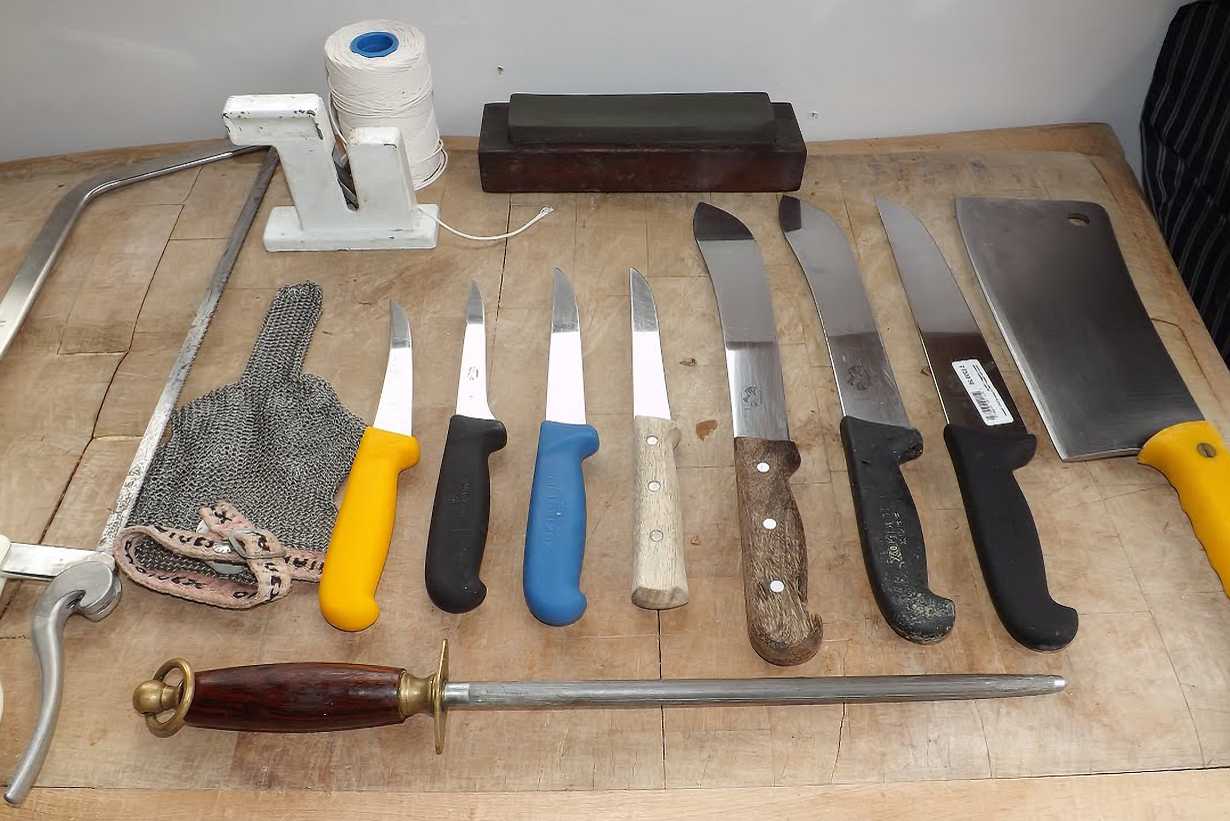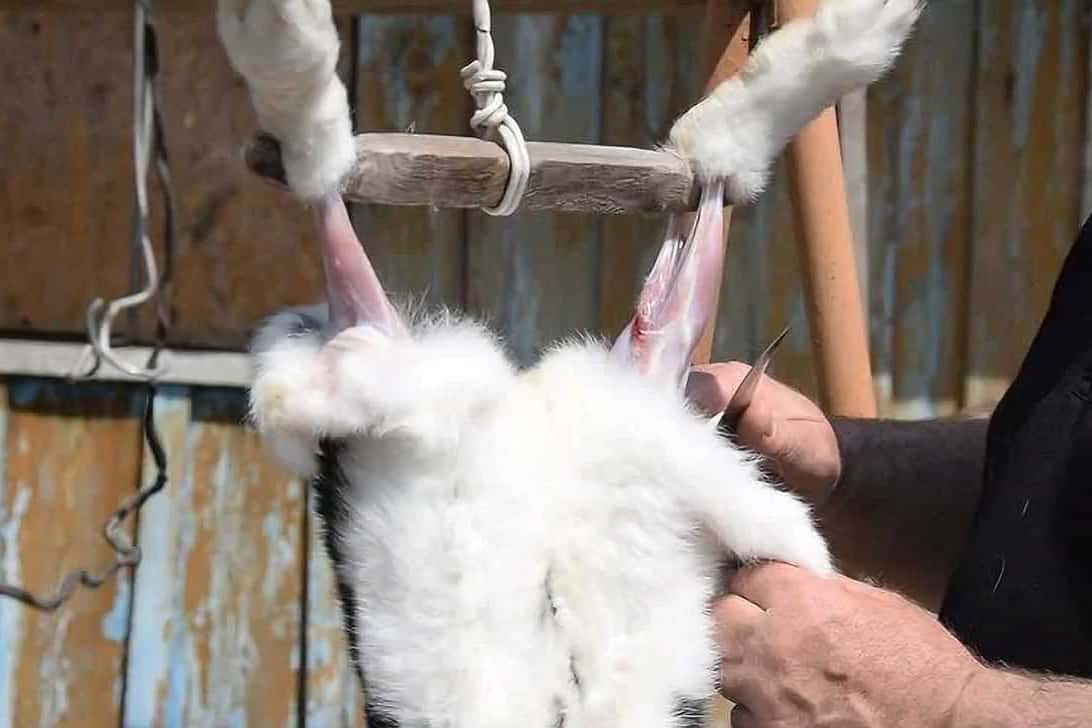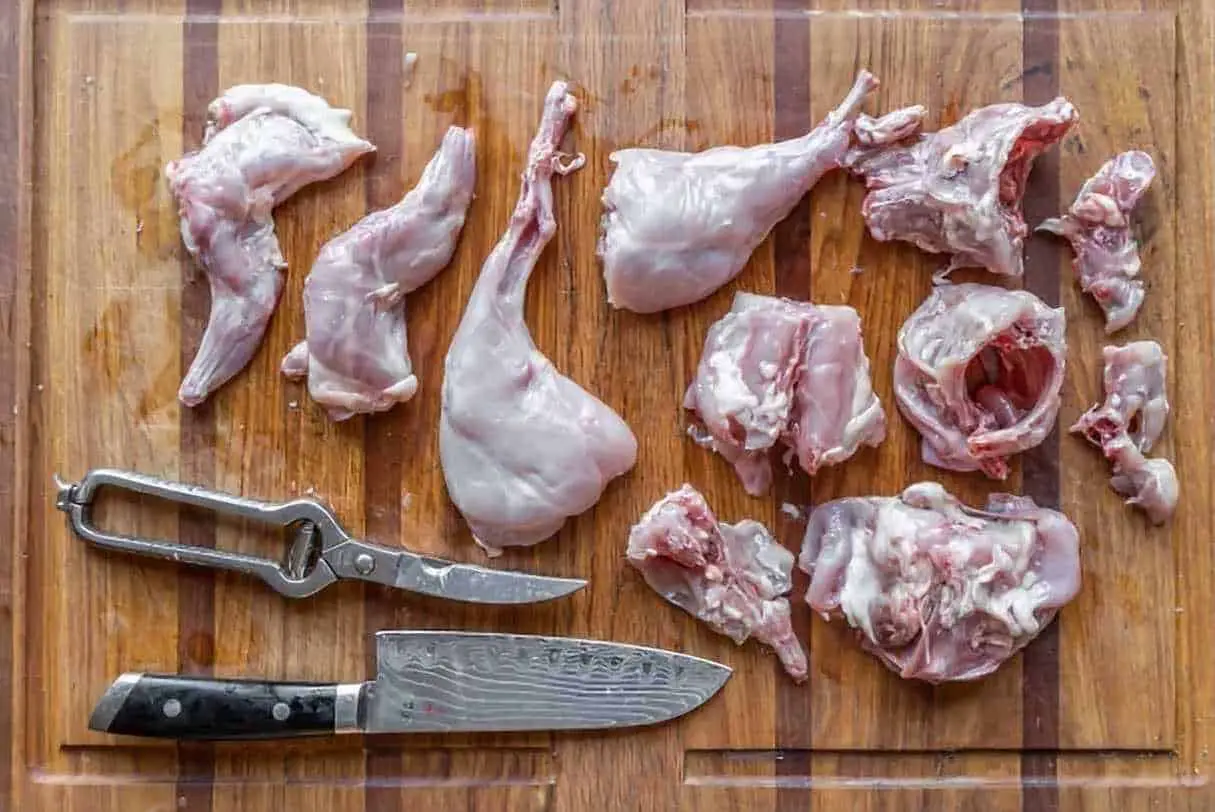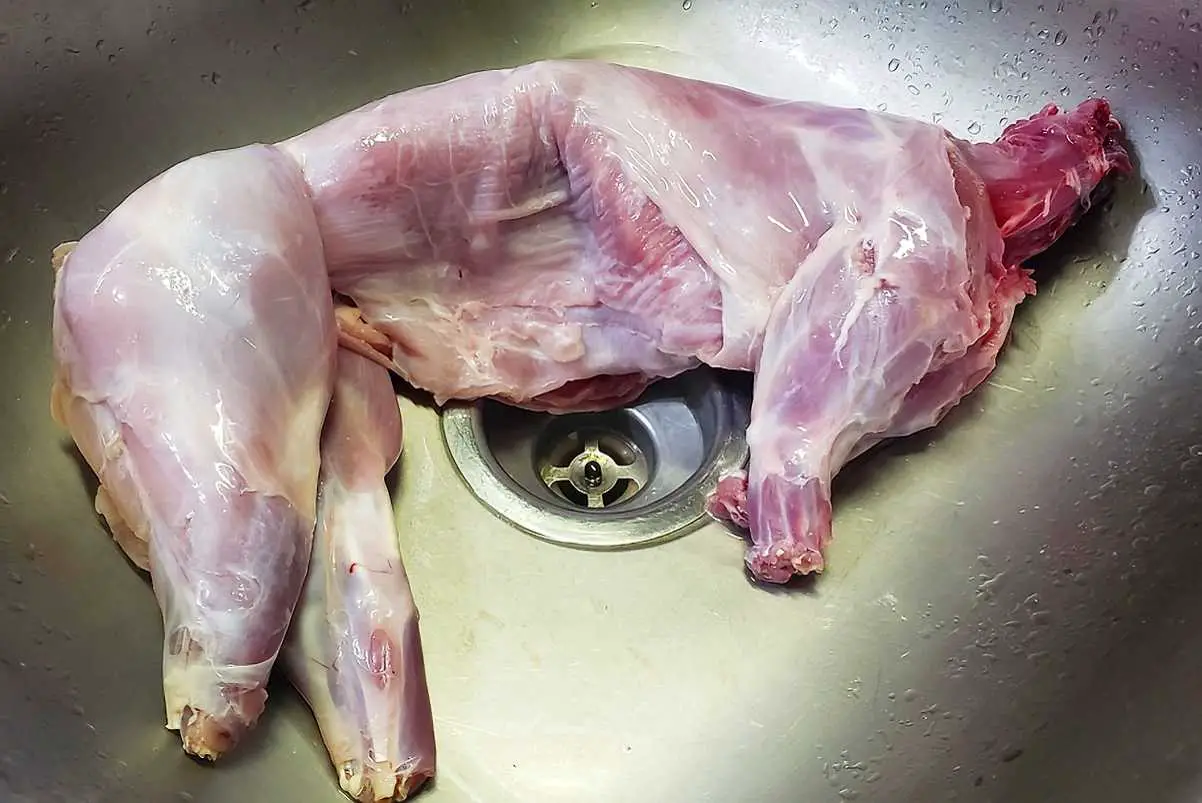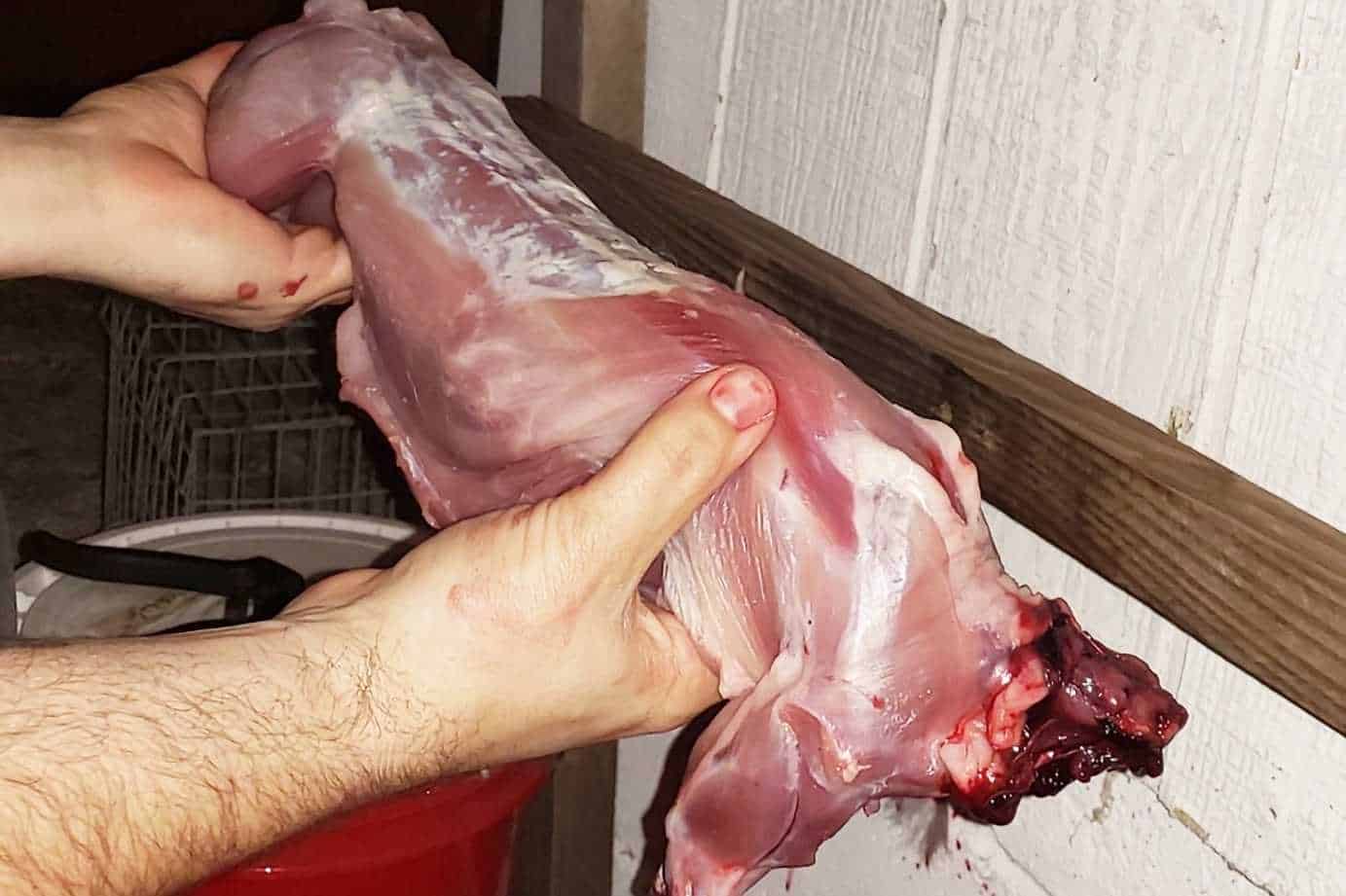You’re missing out on a lot if you’ve never tasted rabbit meat. Asides that it’s very delicious; it is rich in calcium, potassium, omega-3 fatty acids, and low in cholesterol and fat. But before you eat the meat, you need to know how to butcher the rabbit properly. Below are the tools you need and the steps to follow.
Is Rabbit Meat Nutritious?
Before you butcher a rabbit, it’s important to know how valuable the meat is. You don’t want to waste a life over nothing! Here are some reasons you should eat rabbit meat:
- The protein is very digestible.
- It has low fat and cholesterol, making it heart-health friendly.
- It has a juicy taste.
- The meat is more edible since rabbits have tiny bones.
What Are The Tools You Need To Butcher A Rabbit?
While your hands are instrumental in butchering your rabbit (as you’ll need them to handle the tools and move things from one place to another), they aren’t enough. You need other tools such:
- Knife: a short, sharp knife will come in handy. You’ll need it for cutting.
- Bucket: you’ll need a bucket to collect the blood and other unneeded parts of the rabbit. If you don’t have a bucket, a plastic bag will do.
- Rope or twine: you have to hang the rabbit upside down for all its blood to flow out. You need a rope or twine to tie it to something. A shoelace will do too.
- Pole/tree: to tie the rope or shoelace on.
- Water: to wash the rabbit and clean the working space when you are done. Ensure there’s enough water beside you because you’ll need it a lot.
- Bowls: to collect the rabbit parts.
- Shears: to clip the rabbit’s nails. You can use garden shears or, more preferably, buy shears made explicitly for this purpose from your local store.
- Table: to serve as your work surface.
- Cutting board: to cut the rabbits on.
- Ziploc bags/plastic bags/vacuum bags: to store the rabbit meat if you’re not cooking it immediately.
- Gloves: aren’t compulsory but are needed if you don’t want to use your bare hands to pull out the rabbit’s entrails.
Step-by-step Process To Butchering A Rabbit: Culling And Skinning
The first step in the butchering process is to cull the rabbit, which means killing it. It is inhumane to start cutting up the rabbit while still alive. Besides, it will not be an easy process for you as the rabbit will surely fight back and might even hurt you. Here is a guide on how to cull a rabbit:
- Use a hopper popper, a cervical dislocation tool that helps kill the rabbit easily
- Hit the rabbit’s head hard with a stick to make it unconscious. You must dislocate the rabbit’s spine before it wakes up if you follow this method. To do this, place the rabbit’s neck on the ground and stick over it. Then, step on the stick firmly. Use your hands to pull the rabbit’s hind feet up to dislocate the spine, or
- Simply snap the rabbit’s neck backward.
Now that you’ve killed the rabbit, the next step is to skin it. To do this:
- Cut off the rabbit’s head first to make skinning easy. You can throw it away or give predators to feed on it.
- Then, hang your rabbit upside down and tie it onto something, either a tree or a pole or the legs of a high table.
- Next, slit the rabbit’s feet. There’s an obvious difference between skin and meat, and you don’t want to make any mistakes. Naturally, a rabbit’s skin is fragile; you’ll cut the meat and tendon if you cut too deep. So, you should make tiny, small circles on the hind feet and use your hands to pull the skin down to the neck.
- Finally, use the shears to clip off the front feet, and you’re done skinning the rabbit.
Cutting The Skinned Rabbit
Once you’ve skinned the rabbit, the next thing is to cut it into different parts.
- First, you need to get rid of the guts. Slide your knife into the space between the rabbit’s hind legs and cut open the stomach. Be careful not to cut open the intestines.
- Gently pull the guts away from the meat.
- You’ll see a yellow sack containing the rabbit’s urine. Use your knife to detach it from its end. Even though it’s not poisonous, you’ll have to wash the meat well if it bursts on them.
- After, detach the intestines without cutting them. Since they’re usually connected to the anus, you need to dislocate the bone at the back of the hind legs.
- Bend the rabbit backward and use your knife to cut off the flesh covering the bone behind the hind legs.
- Next, find the tail and cut around it. Then gently pull until the intestines come away completely.
- Check the liver to see if it has any spots. If it does, it means the rabbit suffered from a disease, and its meat is unhealthy. But if the liver is evenly dark, you can go ahead with preparing the rabbit’s meat.
- Dip your hands into the gut area to check for any more entrails; if there are, pull them out.
After removing the intestines, the next thing is to remove the second cavity – lungs, esophagus, and heart.
- First, find the film that separates the gut cavity from the heart and tear it open.
- Then, use your fingers to pull out the lungs, heart, and esophagus. You can eat the heart if you want.
- After, wash the rabbit thoroughly with cold water and cut it into smaller parts – the feet and the rib cage. Don’t cut it into anything less than six parts, making the sizes small.
Post-butchering Process
- If you aren’t cooking the rabbit meat immediately, your best bet is to store it. You can put the washed parts in a Ziploc bag or vacuum sealer and freeze them. Ensure there’s no blood on the rabbit meat.
- If you’re cooking, there are many meal options. You can make rabbit pepper soup or chili, fry the meat, and enjoy it with wine. You can also mix the meat with other meats to prepare any dish.
- Ensure you clean up the place used for butchering your rabbit. Pick what you need out of the entrails and dispose of the rest. You shouldn’t throw them in your garbage can to not attract flies or other wild animals. If you’re not feeding them to your dogs, you should bury them.
- After, wash all the tools used – knife, bucket, bowls, shears- and take them out of the way.
6 Things To Know When Butchering A Rabbit
Butchering a rabbit isn’t something you do suddenly; you must have prepared for it. Here are the things to consider:
- Not all rabbit breeds are designed for meat. If you plan to eat rabbit meat sometime in the future, you must have been preparing your rabbit for that. The first is to get a good rabbit meat breed. Some of the best meat breeds are the Standard Rex rabbits, Cinnamon rabbits, Chinchilla rabbits, Silver Fox rabbits, New Zealand rabbits, etc. These rabbits grow fast and weigh more pounds than the average rabbits. Besides, their flesh is tastier.
- There’s a certain age your rabbits should reach before butchering them, or else you won’t have enough meat, or the meat won’t be juicy enough. Rabbits have to be at least eight weeks old and no more than 12 weeks old before you butcher them. Also, bear in mind that a rabbit weighs less after being slaughtered. For instance, a rabbit of 12 pounds can weigh 10-11 pounds after butchering due to the fur and entrails removed.
- Usually, it’s quite difficult for one rabbit to serve a family, so if you want more rabbit meat, you need to butcher more than one rabbit. Depending on how many rabbits you rear and how well you take care of them, you can make eating rabbits regular in your family.
- It’s advisable you don’t feed the rabbits you want to butcher 24 hours before that time. It’s easier to cut a rabbit with no food in its gut. If you notice signs of ill health in your rabbit, that isn’t the time to eat them. Its disease might be contagious. Either kill and dispose of it or take it to a vet doctor to treat.
- Only eat the meat of a rabbit you’ve raised or bought from a trustworthy farm or store. Never eat wild rabbits as that could cause health problems. Also, cook rabbit meat properly.
- If you’re allergic to or have a low tolerance for protein, you might want to stay away from rabbit meat as it has high protein content.
Summary
Butchering a rabbit isn’t difficult if you follow the steps outlined above. However, if you can’t, you can get someone else to do it. Ensure the rabbit whose meat you want to eat is healthy. Some diseases are still contagious and present in the host’s meat. If you’re unsure of the rabbit’s health, you should choose another rabbit or opt for another meat.
